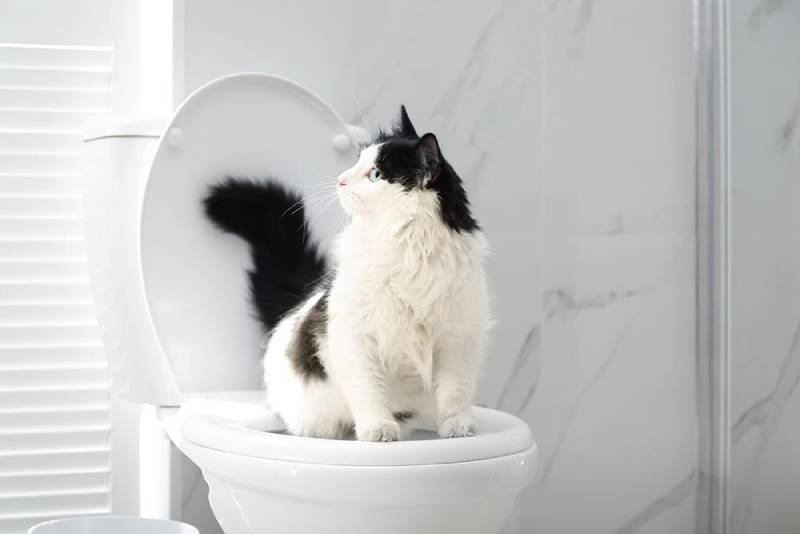They are making several good points relating to Can You Flush Cat Poo or Litter Down the Toilet? in general in this content followed below.

Intro
As cat proprietors, it's necessary to be mindful of exactly how we take care of our feline pals' waste. While it may seem practical to purge pet cat poop down the bathroom, this practice can have destructive consequences for both the environment and human health and wellness.
Environmental Impact
Purging feline poop introduces dangerous virus and bloodsuckers into the supply of water, posturing a considerable risk to aquatic ecosystems. These pollutants can adversely influence aquatic life and concession water quality.
Wellness Risks
In addition to ecological worries, flushing feline waste can likewise pose wellness risks to humans. Pet cat feces may contain Toxoplasma gondii, a parasite that can trigger toxoplasmosis-- a potentially severe ailment, especially for expecting females and people with weakened immune systems.
Alternatives to Flushing
The good news is, there are much safer and much more responsible methods to deal with feline poop. Consider the complying with options:
1. Scoop and Dispose in Trash
One of the most common technique of getting rid of cat poop is to scoop it into a naturally degradable bag and toss it in the garbage. Be sure to make use of a dedicated trash inside story and get rid of the waste quickly.
2. Usage Biodegradable Litter
Choose naturally degradable pet cat trash made from materials such as corn or wheat. These trashes are environmentally friendly and can be safely dealt with in the trash.
3. Bury in the Yard
If you have a backyard, take into consideration hiding cat waste in a designated location far from veggie gardens and water resources. Be sure to dig deep enough to avoid contamination of groundwater.
4. Mount a Pet Waste Disposal System
Buy a family pet garbage disposal system particularly developed for pet cat waste. These systems use enzymes to break down the waste, minimizing smell and ecological effect.
Final thought
Accountable animal ownership extends past offering food and sanctuary-- it also involves correct waste administration. By avoiding flushing feline poop down the bathroom and choosing alternate disposal techniques, we can decrease our environmental impact and safeguard human health.
Why Can’t I Flush Cat Poop?
It Spreads a Parasite
Cats are frequently infected with a parasite called toxoplasma gondii. The parasite causes an infection called toxoplasmosis. It is usually harmless to cats. The parasite only uses cat poop as a host for its eggs. Otherwise, the cat’s immune system usually keeps the infection at low enough levels to maintain its own health. But it does not stop the develop of eggs. These eggs are tiny and surprisingly tough. They may survive for a year before they begin to grow. But that’s the problem.
Our wastewater system is not designed to deal with toxoplasmosis eggs. Instead, most eggs will flush from your toilet into sewers and wastewater management plants. After the sewage is treated for many other harmful things in it, it is typically released into local rivers, lakes, or oceans. Here, the toxoplasmosis eggs can find new hosts, including starfish, crabs, otters, and many other wildlife. For many, this is a significant risk to their health. Toxoplasmosis can also end up infecting water sources that are important for agriculture, which means our deer, pigs, and sheep can get infected too.
Is There Risk to Humans?
There can be a risk to human life from flushing cat poop down the toilet. If you do so, the parasites from your cat’s poop can end up in shellfish, game animals, or livestock. If this meat is then served raw or undercooked, the people who eat it can get sick.
In fact, according to the CDC, 40 million people in the United States are infected with toxoplasma gondii. They get it from exposure to infected seafood, or from some kind of cat poop contamination, like drinking from a stream that is contaminated or touching anything that has come into contact with cat poop. That includes just cleaning a cat litter box.
Most people who get infected with these parasites will not develop any symptoms. However, for pregnant women or for those with compromised immune systems, the parasite can cause severe health problems.
How to Handle Cat Poop
The best way to handle cat poop is actually to clean the box more often. The eggs that the parasite sheds will not become active until one to five days after the cat poops. That means that if you clean daily, you’re much less likely to come into direct contact with infectious eggs.
That said, always dispose of cat poop in the garbage and not down the toilet. Wash your hands before and after you clean the litter box, and bring the bag of poop right outside to your garbage bins.
https://trenchlesssolutionsusa.com/why-cant-i-flush-cat-poop/

Do you like reading about Can You Flush Cat Poop Down The Toilet?? Put a remark below. We will be delighted to see your ideas about this write up. We are looking forward that you come back again before long. Sharing is good. Helping others is fun. Thank you for taking the time to read it.
Find Out More